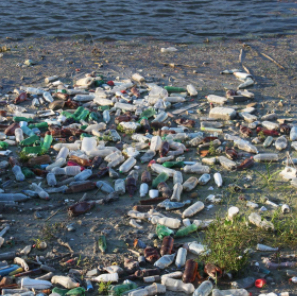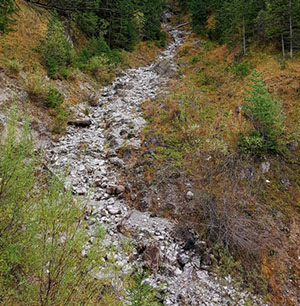Wet and dry periods have major impacts on the water quantity and water quality of both surface water and groundwater systems. Water quantities go up during wet spells and down during dry spells. Dams and reservoirs help solve surface water quantity problems by helping to control floods during wet periods, holding back floodwaters and allowing them to release gradually, thereby reducing the impact of the flood wave generated by nature. At the same time, dams and reservoirs help maintain adequate water supplies during dry periods by impounding water -- perhaps generated during earlier wet periods -- and releasing it as needed. Climate change could therefore necessitate more dams and reservoirs, with the large economic and environmental costs associated with them, such as the impacts on communities submerged by reservoirs or the impacts on ecosystems caused by changes in the quantities and timings of streamflows.
Groundwater quantities are also greatly influenced by wet and dry periods, with water tables rising when climate is wetter and falling when climate dries. One effect of rising and falling water tables is rising and falling streams. Many people do not realize that most water in streams comes not from storm water, but instead from groundwater. Streams occur at low points where the land surface intersects the water table, so when groundwater rises, stream levels rise. Conversely, when the water table falls below the streambed, the stream dries up, running only when a storm temporarily washes water into the channel. Climate change impacts on groundwater therefore will result in changing streams. Another, more purely human, technology associated with groundwater levels is wells. Wells experience few problems when water tables are high, but when they fall it becomes more difficult for wells to pump water, requiring well owners to purchase bigger pumps or -- in those cases when the water table falls below the well depth--dig deeper wells. Deeper wells and stronger pumps result in overpumping and a further drawdown in the regional water table. Consequently, those areas dependent on groundwater where climate change lowers the water table should expect less and more expensive water.

Water quantity is not the only aspect of water resources affected by climate; climate change will also affect water quality. Where net water quantities increase by moderate amounts, surface water quality will generally improve as streams and lakes fill and dilute their pollutants; where available surface water decreases, pollutants will concentrate and water quality will go down. In those areas where water quantities go up dramatically, or where intense precipitation events become more common, water quality will deteriorate substantially as more pollutants are washed into water supplies. Moreover, overloaded storm and sewage systems will spill effluent into streams and water supplies, producing important health hazards. Exceeded capacities will lead to damages, not only causing health hazards but also costing taxpayers large sums to repair, modify, or replace inadequate and damaged systems. Groundwater quality is declining, too, with climate change. Increasing heavy downpours are washing pollutants into wells more frequently, compromising local drinking water supplies after each heavy precipitation event. Sea level rise is causing more frequent cases of saltwater intrusion into groundwater supplies, making coastal drinking water unpleasant in many instances and undrinkable in others.

